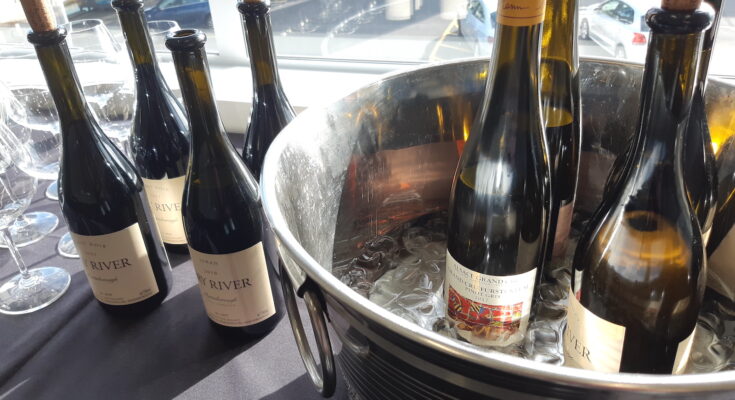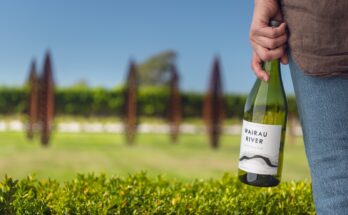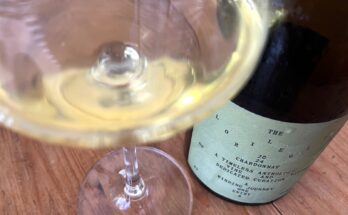Just a couple of days into Spring, and thoughts are already turning to a lighter style of wine than I’ve been hunkering down with for the wettest winter of my life. After the months when you haven’t felt like leaving the house for fear of being washed away, it’s a lovely thought to think ahead to summer evenings with something light and aromatic in the glass.
I do love a Pinot Gris – growing up in Europe, I usually shunned the Italian style and looked to western France for the Alsatian wines – especially the superb Grand Crus which can age beautifully for decades (in my opinion). I’ve even been known to bang on about this – ageing beautifully – about some of the best New Zealand versions, and you’d have to be including today’s contender – Dry River – in that list – probably at the top.
When Neil and Dawn planted Dry River back in 1979, Pinot Gris, Gewurztraminer and Sauvignon Blanc were the first varieties planted, following their ambitions to make Alsace style wines. Pinot Noir and Chardonnay came soon afterwards. Their winemaker, Wilco Lam places huge importance on those aromatic wines (along with Riesling) – what he calls “the underdogs”.
The wines in the tasting today have been brought for a reason – mostly viewed as benchmarks for Dry Rivers own wines. Not just their favourites, but from a production perspective. Where all the producers are farming their vineyards organically, or biodynamically; but they are also a similar size to Dry River – between twelve and twenty hectares. They are also perhaps a little to the side of the mass wine industry – deliberately staying small, to produce hands-on, individualistic wines that tell the story of where they are from.

The start of our flight of discovery was the Dry River Estate Pinot Gris 2021. This is the driest of the first three wines, with around ten grams of residual sugar. The team are starting to pick earlier than in the past, and this shows with a harmony of piercing acidity and tropical ripeness. Dried fruit, rose petal, honey and apricot on the nose. The palate has both distinctive iced biscuit and a lime curd notes. Bright, youthful and classy.
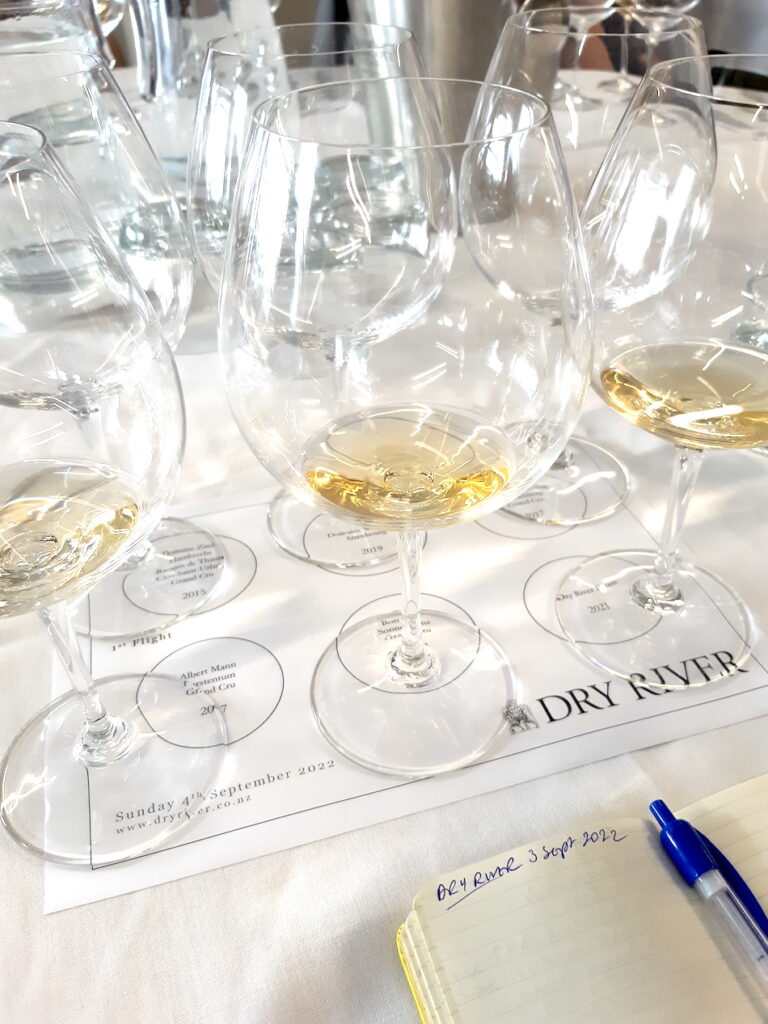
Then comes a Bott Geyl Grand Cru 2011 from Sonnenglanz. The oldest vintage of the line-up, across the valley from the Furstentum wine, getting the afternoon sun. This wine has a lovely depth to the palate, a serene beauty. A golden hue in the glass, with that glossy orange quality flowing through to the palate. Rounded and creamy in texture, but with a minerally, pithy dryness to the finish.
The last of the first three is Albert Mann Grand Cru 2017, from a steep hillside vineyard in Furstentum. The Alsace wines can harvest later, carrying more residual sugar, richer and with weight in the mid-palate. A little bruised apple, melon and pineapple, with a jasmine floral note on the nose. A ripe, jammy/marmalade quality to the finish.
A second flight gets us right into the big hitters. Grand Cru status comes with restrictions – around the amount of vines per hectare you can plant, the grape varieties; and with the Rangen de Thann, some extra restrictions such as the requirement to be organic, and a minimum of 6000 vines per hectare – increasing density.
Domaine Zind-Humbrecht Rangen de Thann, Clos Saint-Urbain Grand Cru 2015 has an amazing richness and dense sweetness matched to a medium acidity. ‘Pear danish pastry, milk chocolate and fruit cake’ were all in my tasting notes for this one. Great finish – complete and rounded.
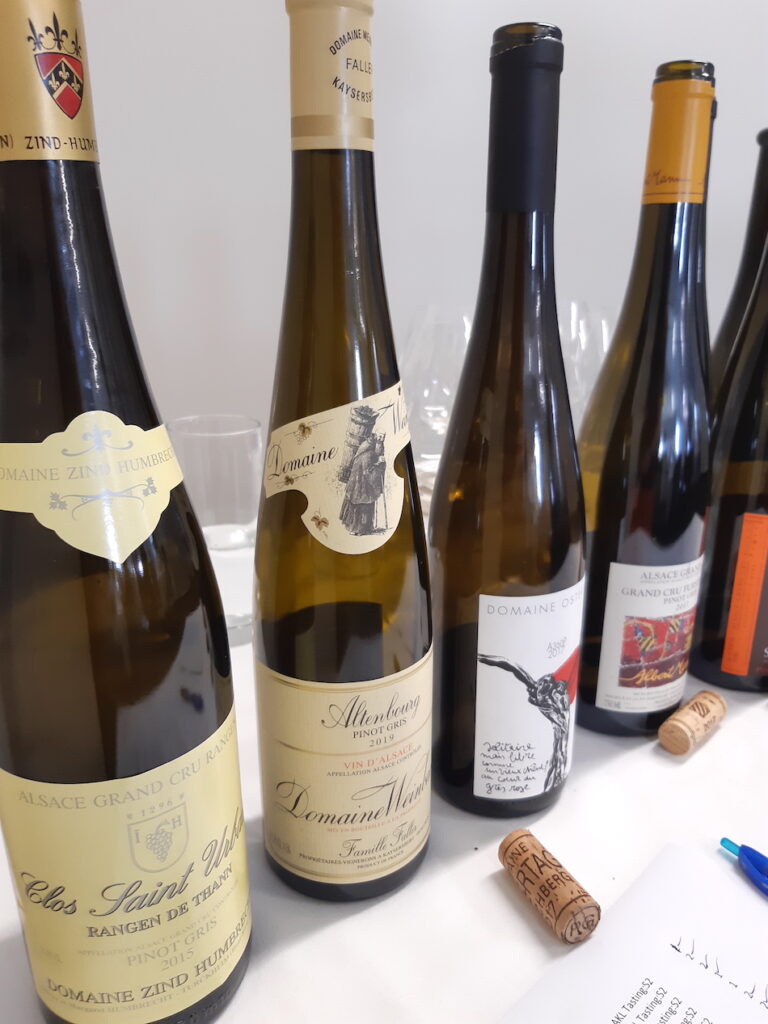
Domaine Weinbach Altenbourg 2019 is a young wine, with a tension and balance leading to a denser, plush mid-palate. White cherry, peach melba, pear and satsuma over a creamy beurre blanc texture. Not a Grand Cru, but a classic, powerful Alsace style.
My favourite, the Domaine Ostertag Muenchberg Grand Cru 2017 is the driest of the afternoon, with around 5 g/l residual sugar. A dry, super-clean style, but with tons of fresh ripe fruit – blood orange, cherry and almond butter on the nose. I loved the astringent, peppery, bitter note to this wine. Herbal, with fennel, nettle and even a liquorice element running through it. Excellent.
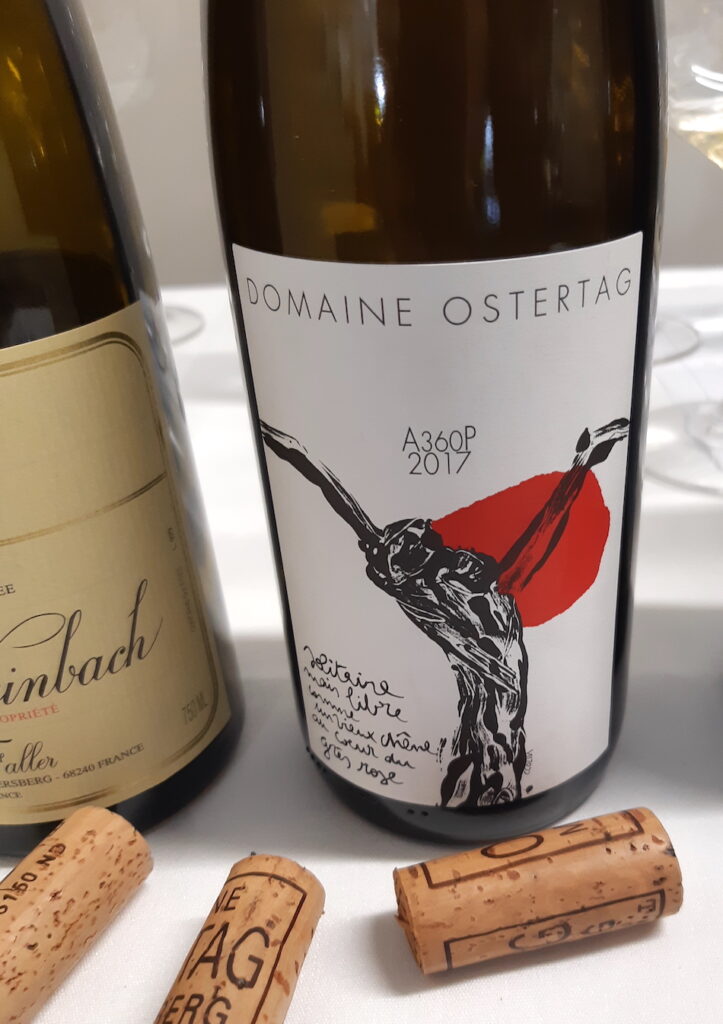
At the end of the Pinot Gris we had the opportunity to try the Spring release wines from Dry River – Chardonnay and Syrah, plus the 2021 Pinot Noir just bottled two weeks ago. The Syrah has now been pulled out, so the 2020 will be the last release. This is looking fabulous, as is the Pinot Noir despite the obvious youth and new bottling. The Chardonnay is fresh and tight, with lovely green notes – I’ll look forward to getting a few of these, after the 2020 did very well, with a fourth place spot in the Top 10 tasting in August – www.winefolio.co.nz/?p=6284

